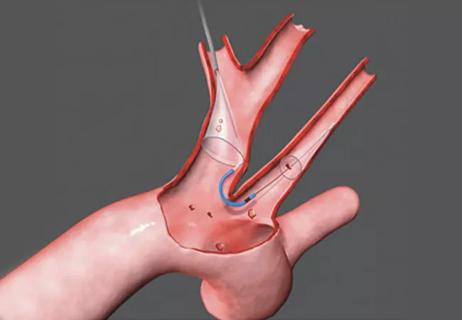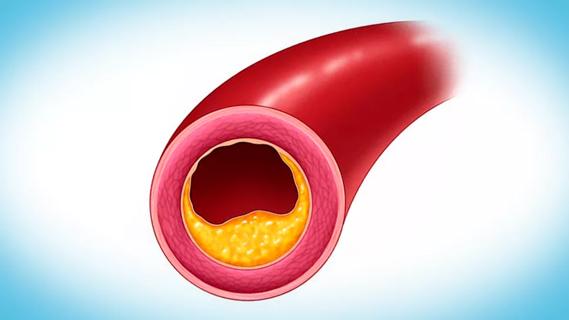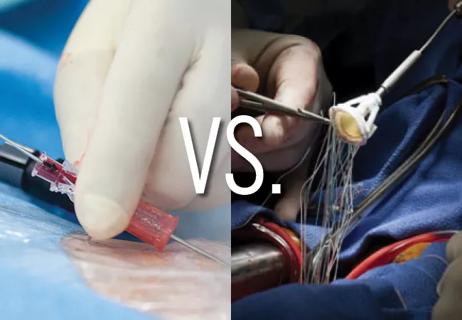In the wake of NOTION-3 findings, a strong argument for physician judgment remains

About half of patients who undergo transcatheter aortic valve replacement (TAVR) for aortic stenosis also have stable coronary artery disease (CAD), making them potential candidates for percutaneous coronary intervention (PCI) for relief of symptoms. But there is no consensus on whether these patients should be offered PCI before, during or right after TAVR; whether they are best managed medically after TAVR, delaying possible PCI until a future date; or whether they should be referred for open surgical aortic valve replacement (AVR) and coronary artery bypass grafting (CABG).
Advertisement
Cleveland Clinic is a non-profit academic medical center. Advertising on our site helps support our mission. We do not endorse non-Cleveland Clinic products or services. Policy
“At Cleveland Clinic, we typically do not perform ad hoc stenting of stable CAD in patients undergoing TAVR unless a lesion — such as an ostial lesion — would likely interfere with the valve implant,” says Rishi Puri, MD, PhD, an interventional cardiologist in the Department of Cardiovascular Medicine. “In the weeks and months after TAVR, we optimize and assess patients clinically, monitoring them to determine whether symptoms have resolved, and we consider PCI as needed for symptom relief.”
Dr. Puri authored an editorial in the New England Journal of Medicine (2024;391[23]:2267-2268) in response to the third Nordic Aortic Valve Intervention trial (NOTION-3), which aimed to address the debate over timing of PCI in patients undergoing TAVR. Results of this international, open-label, randomized superiority trial were published in the same issue (N Engl J Med. 2024;391[23]:2189-2200). The trial did not assess the role of surgical AVR plus CABG.
The NOTION-3 cohort consisted of 455 patients with severe aortic stenosis who were to undergo TAVR and had at least one coronary artery lesion with fractional flow reserve of 0.80 or less, or a diameter stenosis of 90% or greater. In addition to TAVR, patients were randomized to undergo PCI (n = 227) or be managed medically (n = 228). Most of the patients who underwent PCI had it before or at the same time as TAVR.
The primary endpoint was the occurrence of a major adverse cardiac event (MACE, a composite of death from any cause, myocardial infarction or urgent revascularization). At median follow-up of two years, MACE occurred in 26% of PCI patients versus 36% of conservatively managed patients (P = .04). The most common events were myocardial infarction or urgent revascularization, occurring in patients with angiographic coronary artery diameter stenosis of at least 90%.
Advertisement
Bleeding events (mostly minor) occurred more often in patients who underwent PCI (28% vs. 20%; hazard ratio = 1.51 [95% CI, 1.03 – 2.22]).
The authors concluded that all patients undergoing TAVR who have lesions with a coronary artery diameter of at least 90% or a fractional flow reserve of 0.80 or less should be considered for PCI.
In the accompanying editorial, Dr. Puri argues that in patients undergoing TAVR, waiting to perform PCI for stable CAD — even in those with advanced atherosclerosis and low fractional flow reserve — can be justified on several counts.
“Notably, the curves for death and myocardial infarction did not start to diverge between the two cohorts until about a year after TAVR,” Dr. Puri points out. “This suggests there is time in the months following TAVR to monitor symptoms closely, adjust medications as needed and plan for a PCI if indicated.”
Although rates of urgent revascularization diverged earlier, most cases were in patients at high identifiable risk who should be monitored most closely post-TAVR. Furthermore, Dr. Puri adds, timing of revascularization was subject to bias, as patients and providers were aware of coronary artery status.
He notes that another advantage of postponing PCI until after TAVR is that PCI is likely better undertaken with intact aortic valve function and unloaded left ventricles. In addition, pre-TAVR PCI entails the patient being on dual antiplatelet therapy, increasing the risk of a bleeding event.
Dr. Puri was principal investigator of a recently published related investigation examining the safety of performing TAVR alone in patients with untreated chronic obstructive CAD (Eur Heart J. 2024;45[21]:1890-1900). The study population consisted of 1,911 patients treated with TAVR at Cleveland Clinic between 2015 and 2021. Of these patients, 75% had nonobstructive CAD and 25% had obstructive CAD deemed to be either intermediate (6%), high (10%) or extreme (9%) risk.
Advertisement
Procedural complication rates from TAVR were low and not significantly different between groups.
At median follow-up of 21 months, no significant differences were found between patients with obstructive CAD (all severity cohorts) and those with nonobstructive CAD in all-cause mortality and in MACE (i.e., acute coronary syndrome, stroke or heart failure hospitalization). Adjusted analyses did not find a correlation between the extent and severity of untreated obstructive CAD and either mortality or MACE.
“The NOTION-3 results and our results were actually consistent, although our conclusions differ,” says Dr. Puri. “I’d argue that with careful monitoring of high-risk patients, PCI can wait until it’s determined to be needed, reducing the risk of bleeding events and allowing us to see whether addressing aortic stenosis with TAVR relieves symptoms.”
“There are two important guiding principles for decision-making regarding revascularization in patients with stable CAD and aortic stenosis,” adds his interventional cardiologist colleague Samir Kapadia, MD, Chair of Cardiovascular Medicine at Cleveland Clinic. “One is the need for revascularization irrespective of aortic stenosis, and the other involves the technical considerations of revascularization after TAVR.
“First, it is wise to determine whether, with the current data on CAD, the patient would need revascularization if their aortic stenosis did not exist,” Dr. Kapadia continues. “If the answer is maybe, then it is best to determine whether performing TAVR will make percutaneous coronary revascularization technically challenging or not. If coronary access is unlikely to be an issue after TAVR, it is best to wait to consider revascularization after TAVR. In the few patients in whom access may be an issue, revascularization can be considered before or at the time of TAVR.”
Advertisement
“Clearly, the other option is to refer patients for surgical AVR plus CABG,” adds Lars Svensson, MD, PhD, Chief of Cleveland Clinic’s Heart, Vascular and Thoracic Institute. “This option has a very low mortality risk and also obviates the risk of patients needing reoperation, usually with removal of the TAVR valve and concurrent CABG, when CAD has advanced or not been appropriately treated.”
Dr. Puri adds that two ongoing trials will add important data related to managing TAVR in patients with CAD:
Advertisement
Advertisement

TVT Registry analysis could expand indication to lower surgical risk levels

Patient series and bench validation support efficacy and safety of CLEVE procedure

Post hoc analysis of PROTECTED TAVR finds reduced stroke risk in the U.S. but not beyond

Analysis of STS/ACC TVT Registry finds greatest benefit in patients with prior stroke

TAVR explant demands multidisciplinary expertise

How our HVTI Advisory Services team facilitated swift improvements for an allied health organization

Support for a TAVR-first approach in patients with concurrent valve and coronary disease

Five-year data demonstrate convergence of outcomes from years 1 to 5